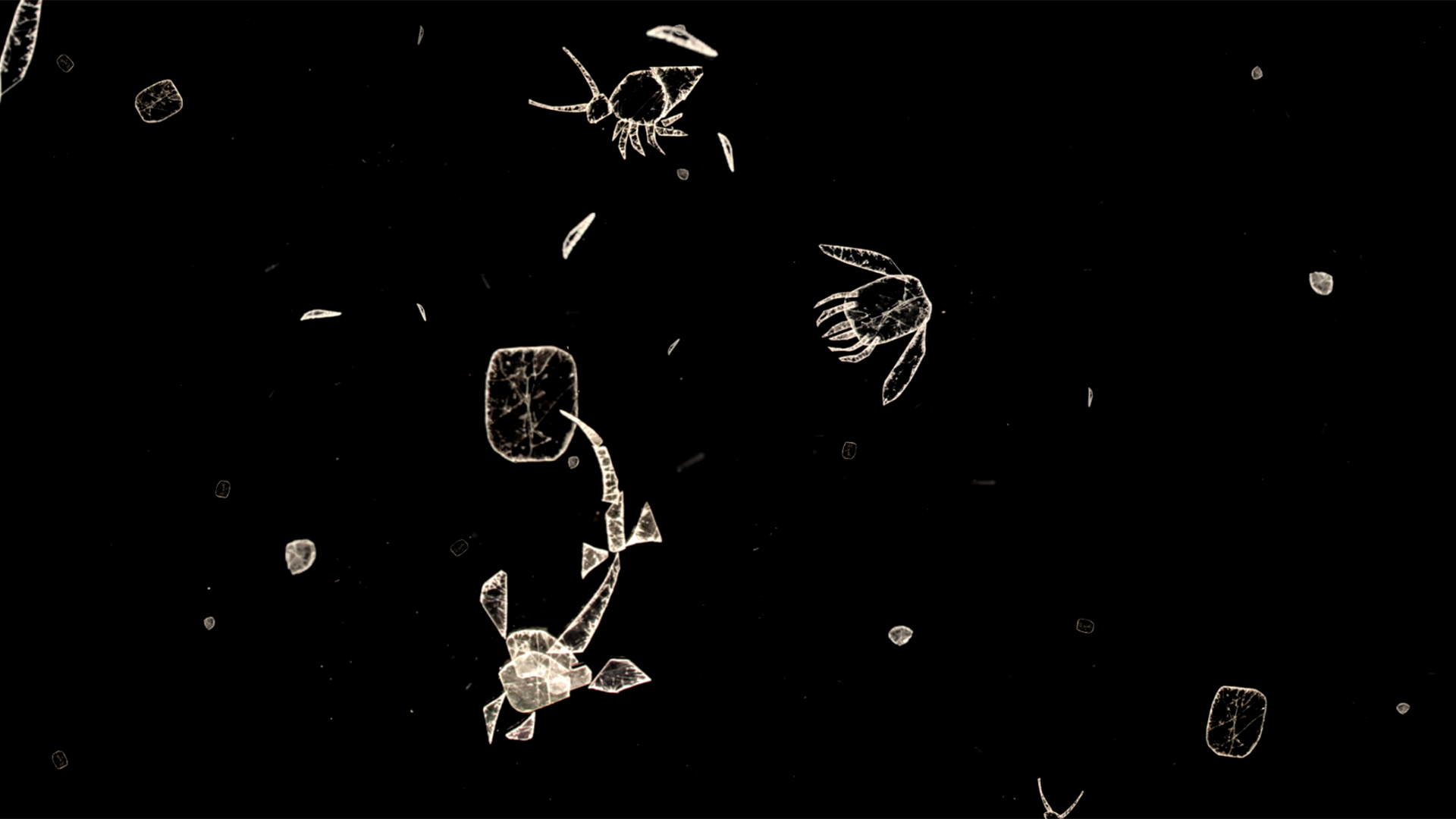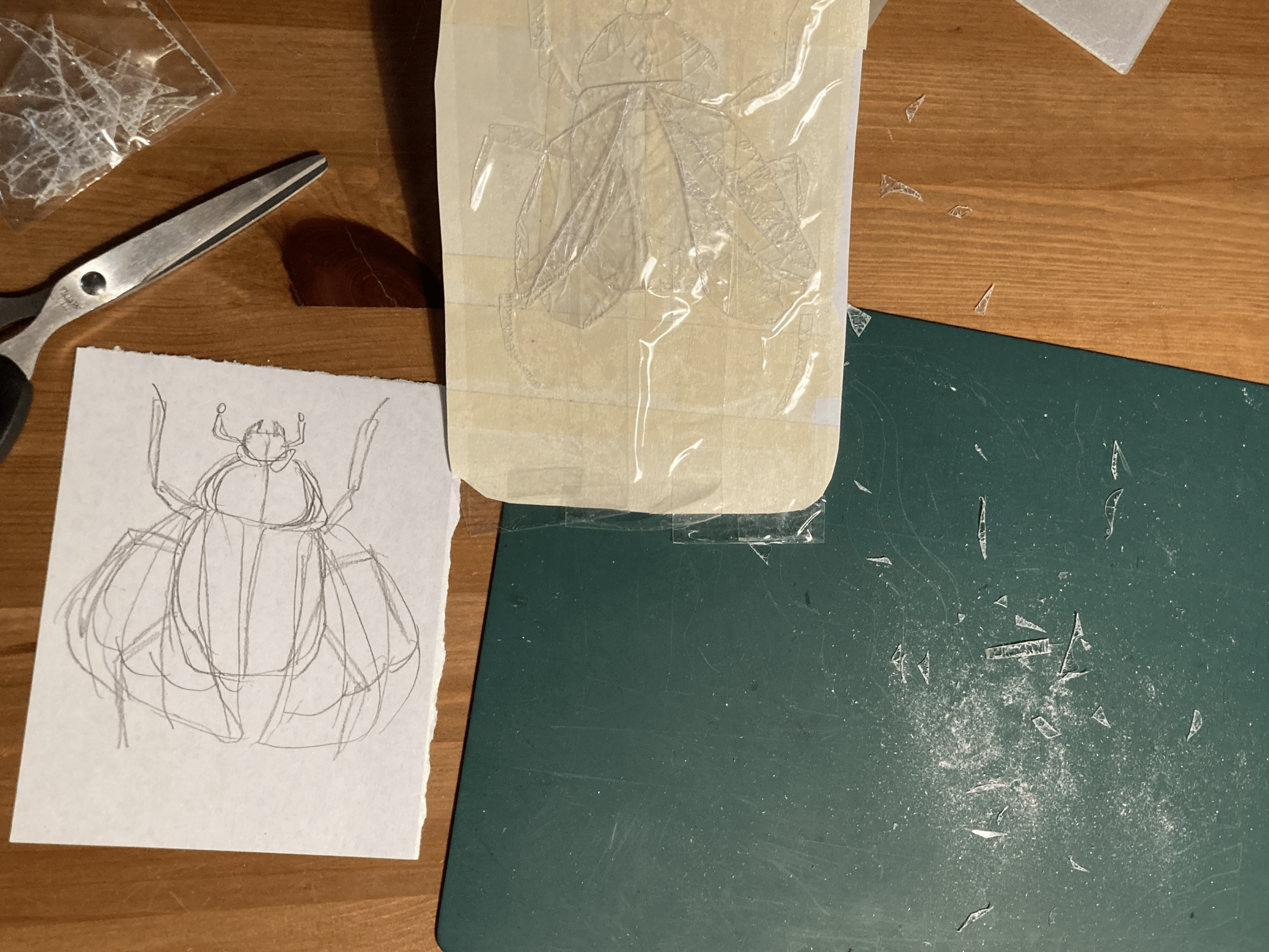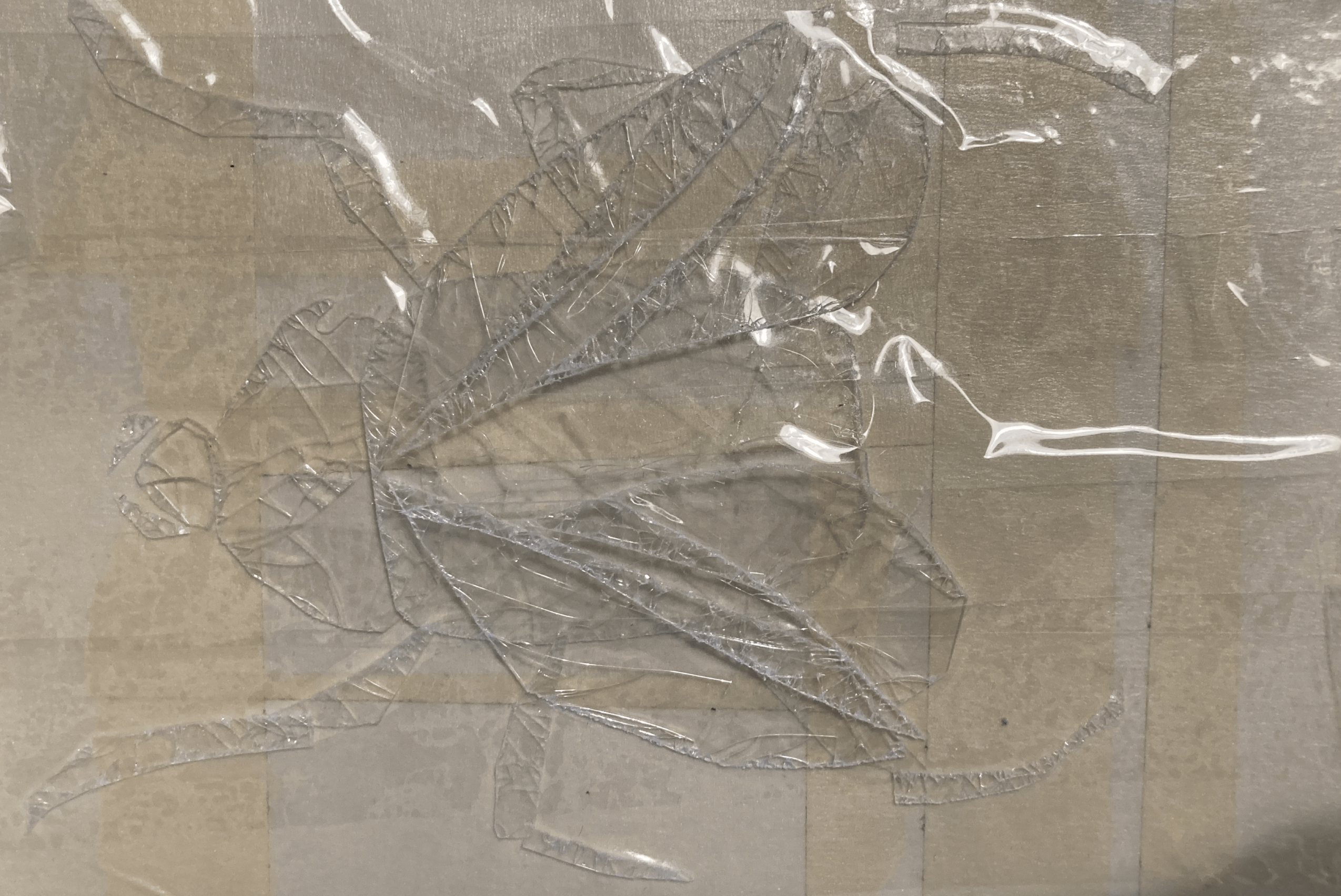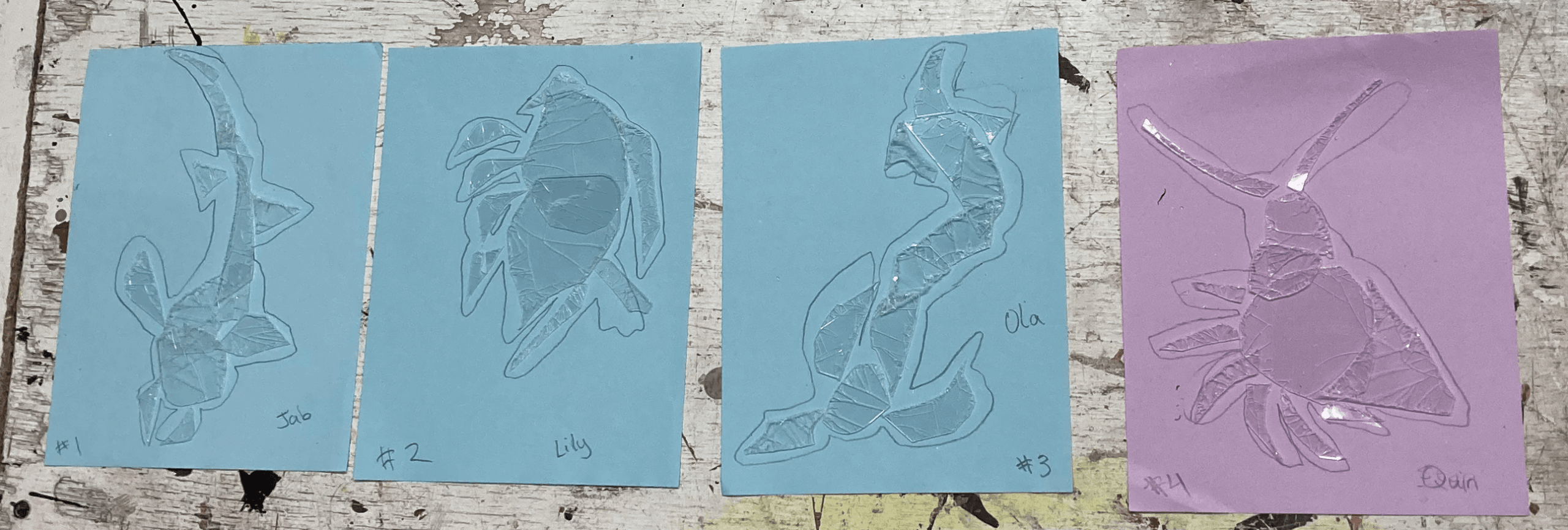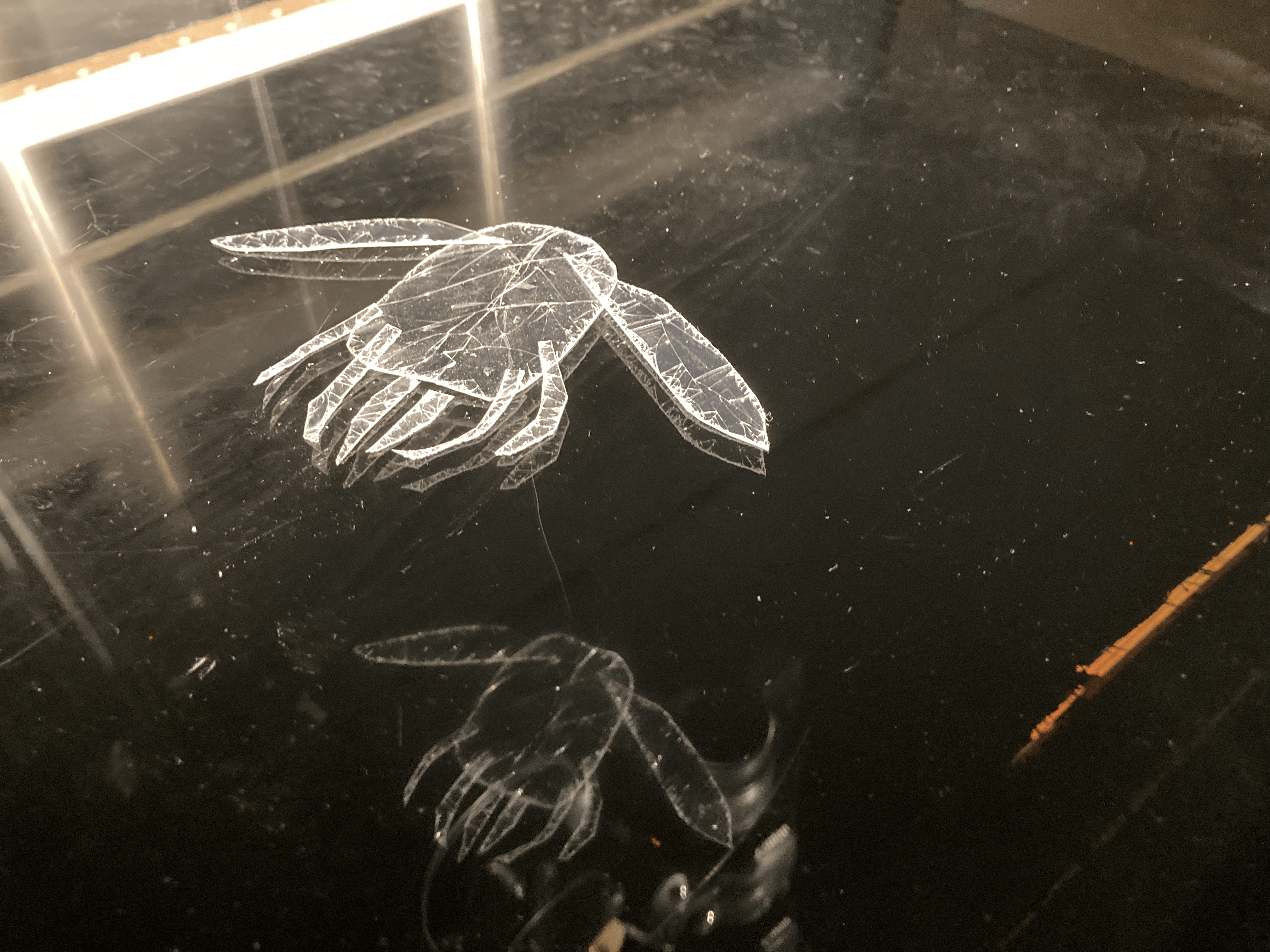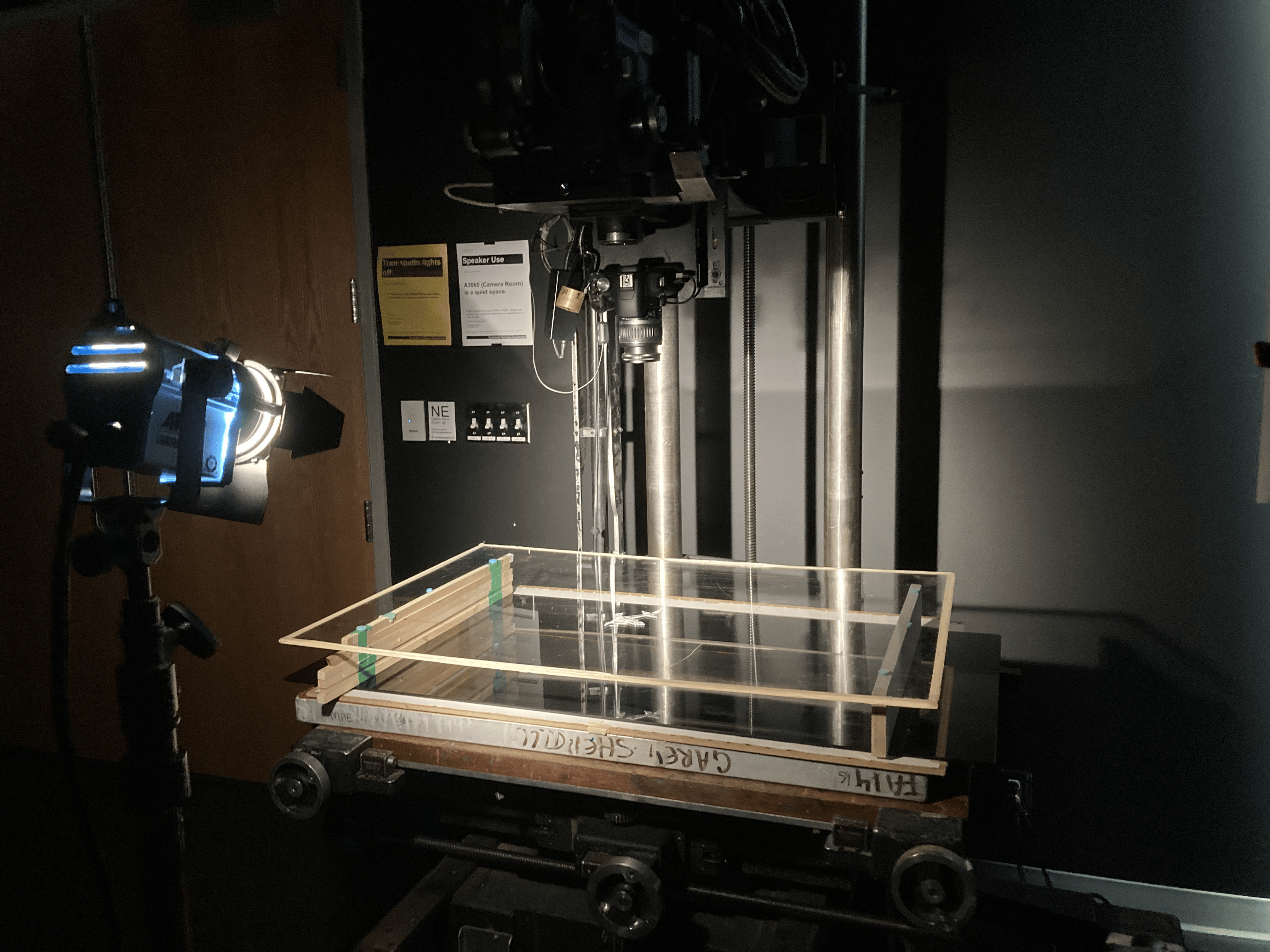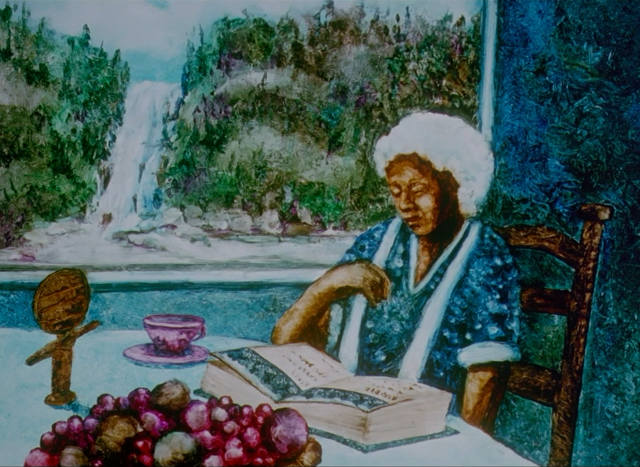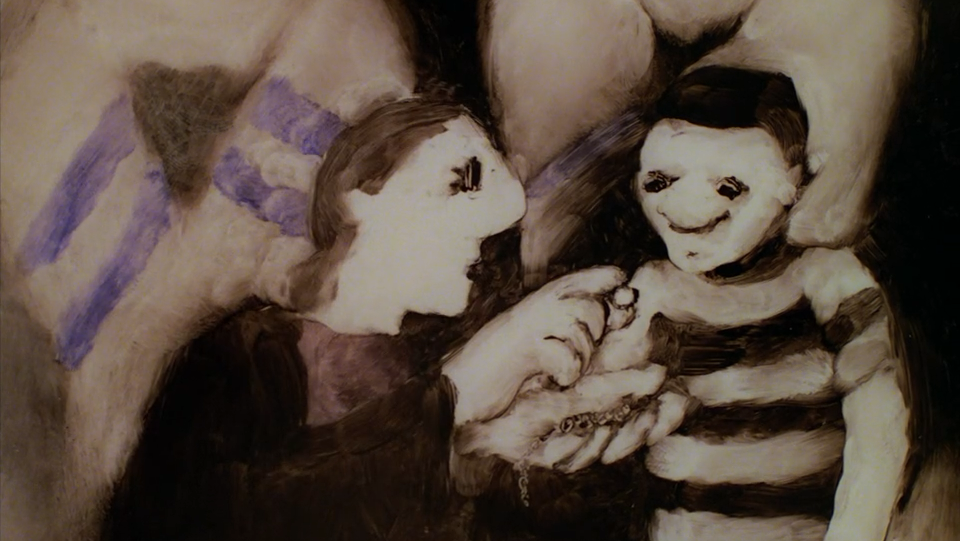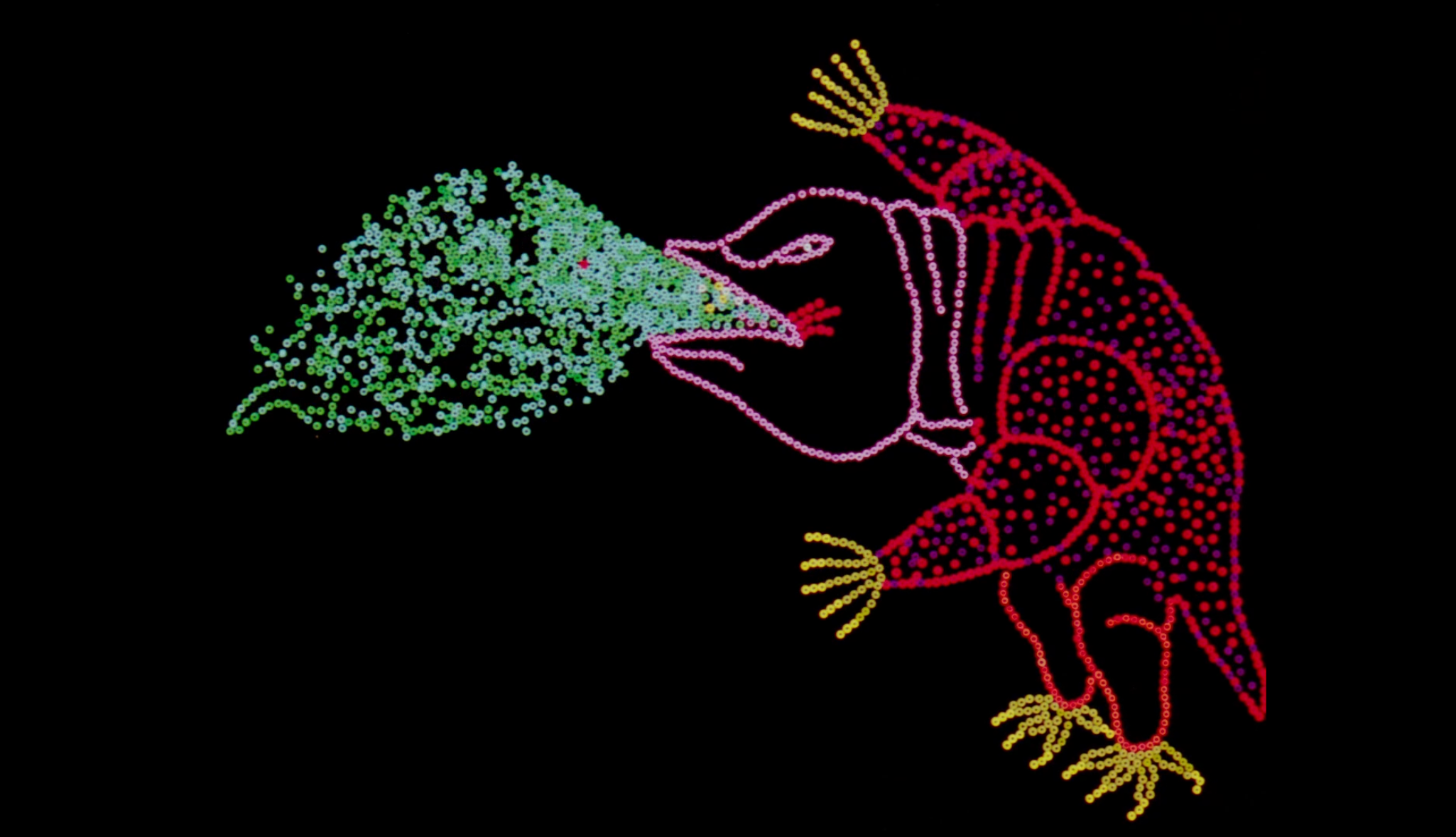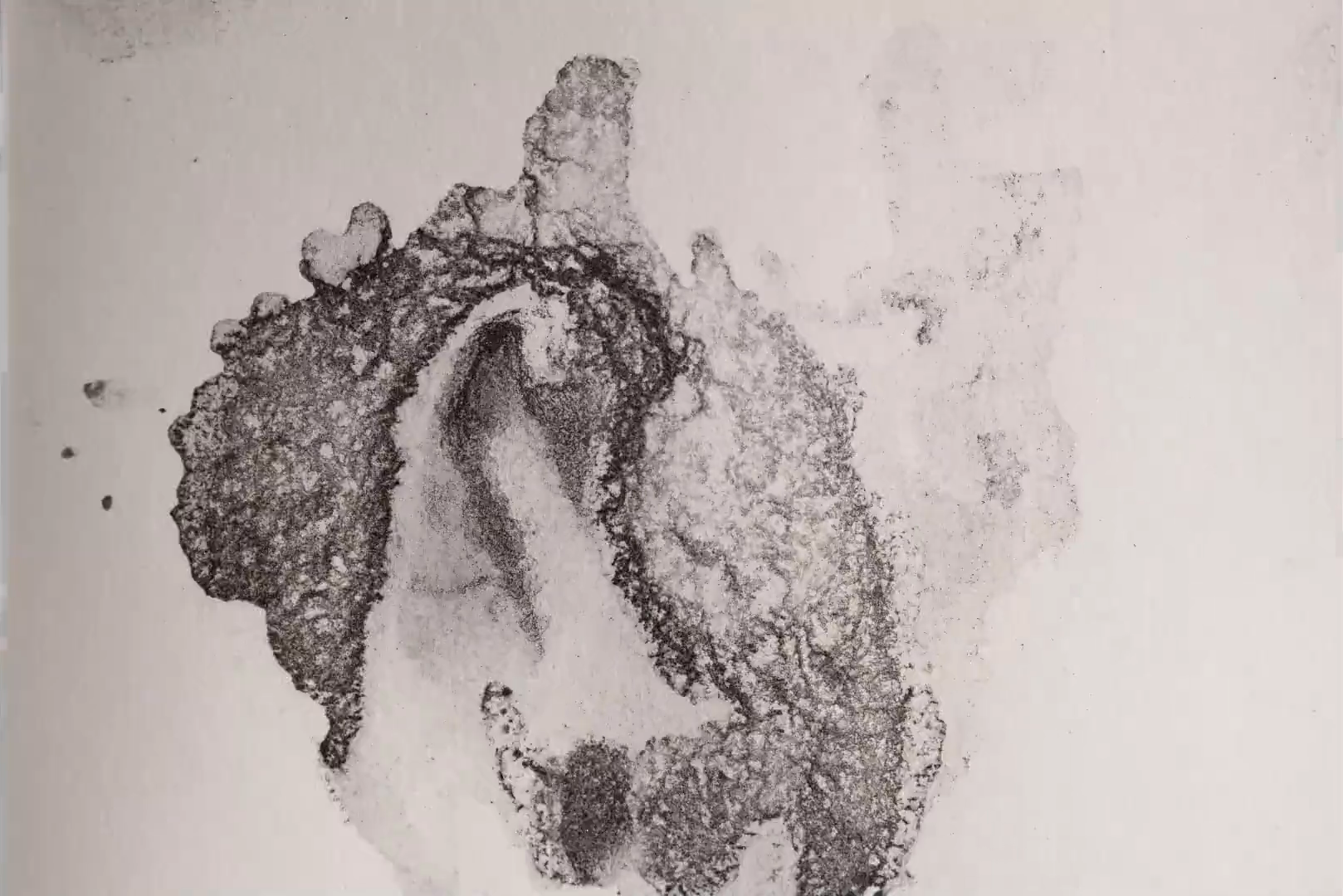Animating Found Glass Under the Camera
Glass is a unique material formed by cooling molten sand, limestone, and sodium carbonate into a solid with a disordered molecular structure, more akin to a liquid— earning it the label “supercooled liquid.” This gives glass its unique properties of transparency, balance of durability and brittleness, and capacity for transformation through melting, reshaping, and recycling. Workshop assistant Weiwei Wu was inspired by the ways glass reflects and refracts light, alternately revealing or distorting perspective and scale. She connected her research into glass with an interest in microscopic imaging, which relies on glass to reveal tiny worlds invisible to the human eye. This page summarizes Wu’s experiments in animating found glass under the camera, using the addition of a multiplane stand and macrophotography lens.
a tree blows in the wind – found glass
Initial experiments tested the visual properties of layered glass. Found and sourced glass containers and dishes were broken up into shards, and the raw edges were sealed with hot glue. The sealed fragments were arranged into short compositions against a bottom sheet of black glass, which served as a background to reflect and capture the lightplay. Something that was quickly apparent was the difficulty of keeping the glass pieces in controlled positions. The irregular shapes of each piece resulted in continuous small movements. Paired with the slower capture rate of the camera, this created many unintentional smears – something Wu appreciated and wanted to explore later. Breaking glassware also led to a loss of some of its refractive qualities, likely due to the smaller surface areas and irregular edges. The resulting animation tests suggested images of plant cells under a microscope, recognizable by illuminated edges and interconnected by viscous fluid.
glass marbles and tubes vibrate in a molecular structure
The next experiment was inspired by the underlying molecular structure of glass. When most materials cool down from a liquid state, their molecules line up into regular patterns. For example, as liquid water freezes to become ice, its molecules arrange into crystalline patterns. Glass is different. When liquid glass cools, its molecules freeze in a disordered “amorphous” arrangement, like liquid frozen mid-motion. Wu explored the idea of a frozen liquid state by animating vibrations of marbles and small test tubes, relying on glass forms associated with scientific investigation.
The aim was to create illusions and virtual images using reflections of layers of molecules. The trickiest part was the limited control over the assortment of components. The glass marbles and test tube cylinders rolled around easily, colliding and vibrating even with delicate alterations.
Wu was interested in microbes and the microscopic world, and wanted to mimic that feeling using glass as a medium for movable puppets. A primary challenge was figuring out how different types of glass might break and how to control the shape of fracture. Differently treated glass will break in different ways: annealed glass tends to create more dangerous glass shards; laminated glass has a plastic vinyl that will hold pieces together; and tempered glass will crack and crumble into tiny blunter pieces. Wu settled on working with glass phone screen protectors, which are made of laminated tempered glass roughly 0.3 to 0.5 mm in thickness. This type of glass was readily available and easily sourced second-hand (especially cracked), maintained its shape due to the layer of lamination, and captured the intricacies of created cracks.
Multiple tests were done to determine the ideal background for an elaborate composition, ideally to bring out the glass textures, while also capturing reflections. The black glass surface trialed in earlier experiments proved especially effective here, because the puppets were illuminated with a glow, and the shattered textures and cracks were beautifully captured. With a white glass surface, puppet shadows and reflections were captured much clearer, but their transparency and brittle textures were compromised. The tactility and delicacy of the glass was lost with the whiter background, so the black background was chosen to showcase the material.
testing compositing strategies and background colours
For the final test in this direction, Wu animated each puppet separately, then digitally composited them together to imitate an under-the-microscope visual aesthetic. She focused the lighting on the outlines and cracks of the puppet, lighting from a top side angle. The movement of each microbe was taken into account, so that each one moved in a different rhythm and style from others. Wu found it tricky to loop the movement cycles of some of the microbes, and choreographed them to travel across certain spaces with particular movements, rather than staying and looping in place. This produced a more varied and dynamic scene of microbial life.
microscopic creatures and particles dart across the screen
Glass and the microscope
A brief illustrated page on the history of the microscope and its reliance on glass, published by the London Science Museum.
See the illustrated essay